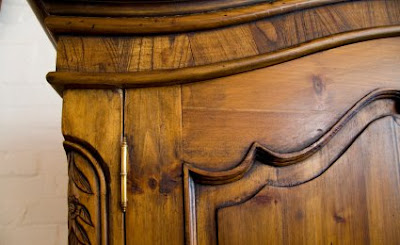How to skate furniture?
Give a new character to your furniture can be done in a
jiffy with the patina. Learn how to perform this technique for low-budget
makeover.
Skate furniture can give a new look while spending as little
as possible. This technique provides an original look to your wooden furniture.
Once weathered, new furniture feature a vintage look and resume their old
furniture beauty of youth. All wood furniture can be weathered, but if you want
lasting results, it is best not to skate as solid wood furniture. Robust, this
type of wood is less susceptible to the attack time and is more resistant to
chipping.
Skate furniture, the tools
Easy to achieve, the patina of the furniture does not
require much expense. To do this, you will only need brushes of different
sizes, steel wool, sandpaper, an undercoat, a special product stripping and
elbow grease. Then please have a brass brush to treat hard to reach surfaces
such as corners. The type of paint will depend on the final result you want. In
general, the most popular is acrylic, however this does not preclude the use of
an oil painting or paint casein.
Skate furniture, surface preparation
Before starting the patina, the preparation of the furniture
is indispensable. It is to equalize the surface to promote adhesion of the
paint and patina. Start by stripping the cabinet by putting the bare wood.
Attack the wood finish with chemical stripper before making a finish with a
fine abrasive. If the surface has imperfections to skate, you can correct them
by plugging the holes with wood putty special. After drying, leveling the
surface again in the sanding. For unfinished wood, stripping is not necessary,
instead you can simply clean the surface with water and soap.
A cabinet skate, the underlayer and finishing
Once the surface is smooth and thoroughly dusted, you must
go through an application of the underlayment. Be sure to cover the entire
surface to facilitate subsequent membership of the patina. Approximately 4-5
hours of drying are then required after paint coating. Sanding with steel wool
removing traces of brush strokes. Remove sanding residue with a clean dry
cloth. Apply one to two layers of acrylic paint according to the desired
effect. Perform a new sanding with an abrasive grain finish. This last step
brings out the wood grain.



